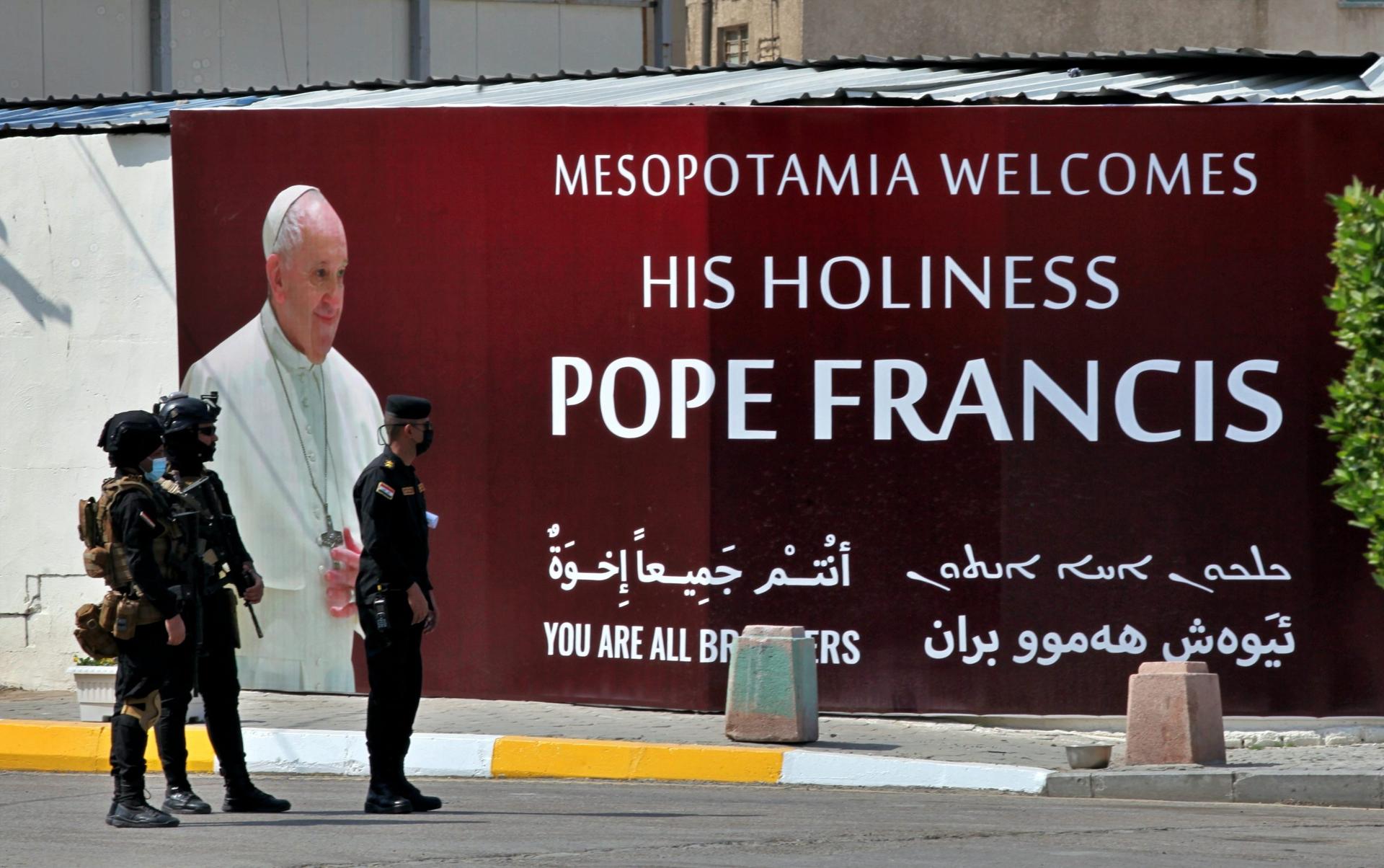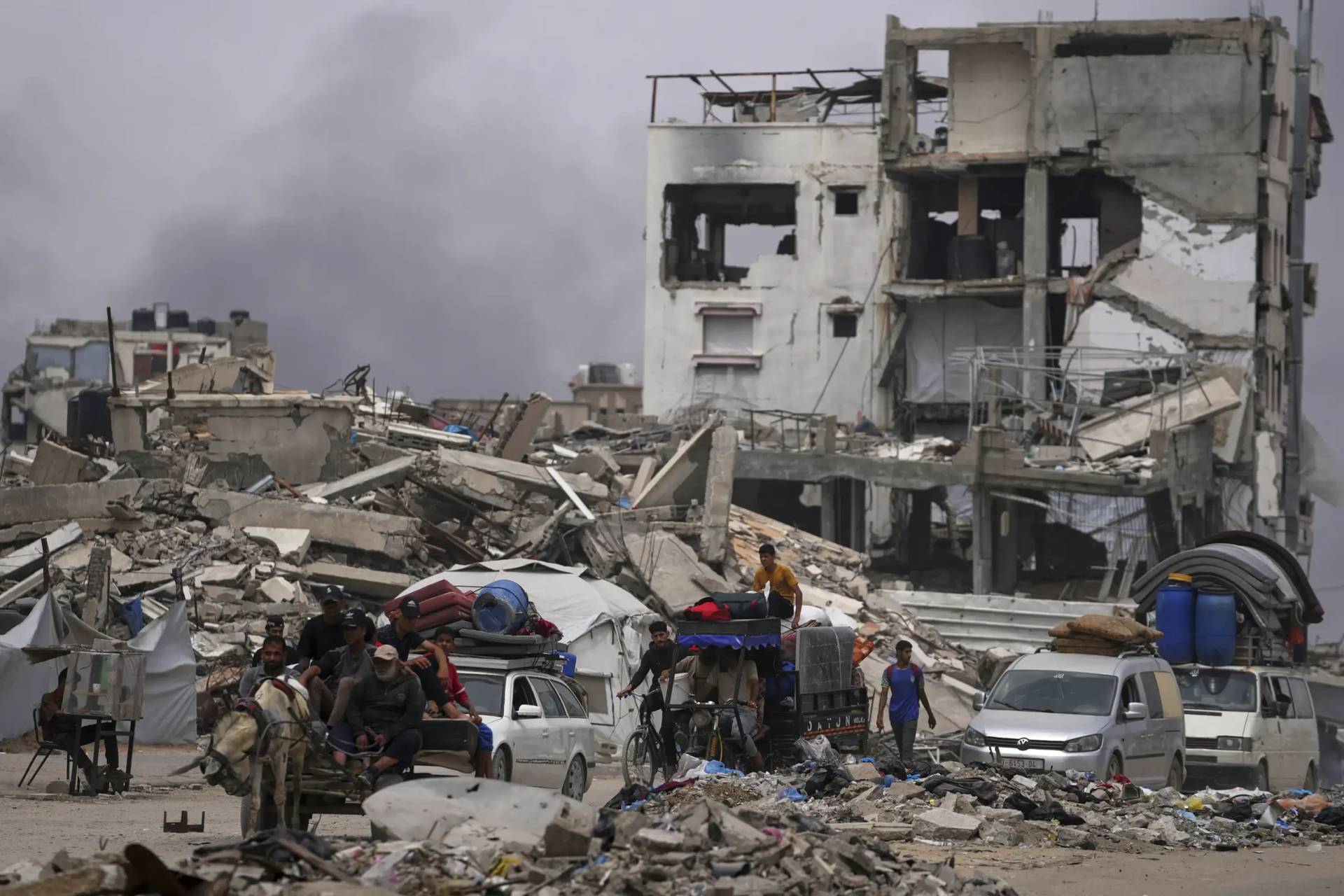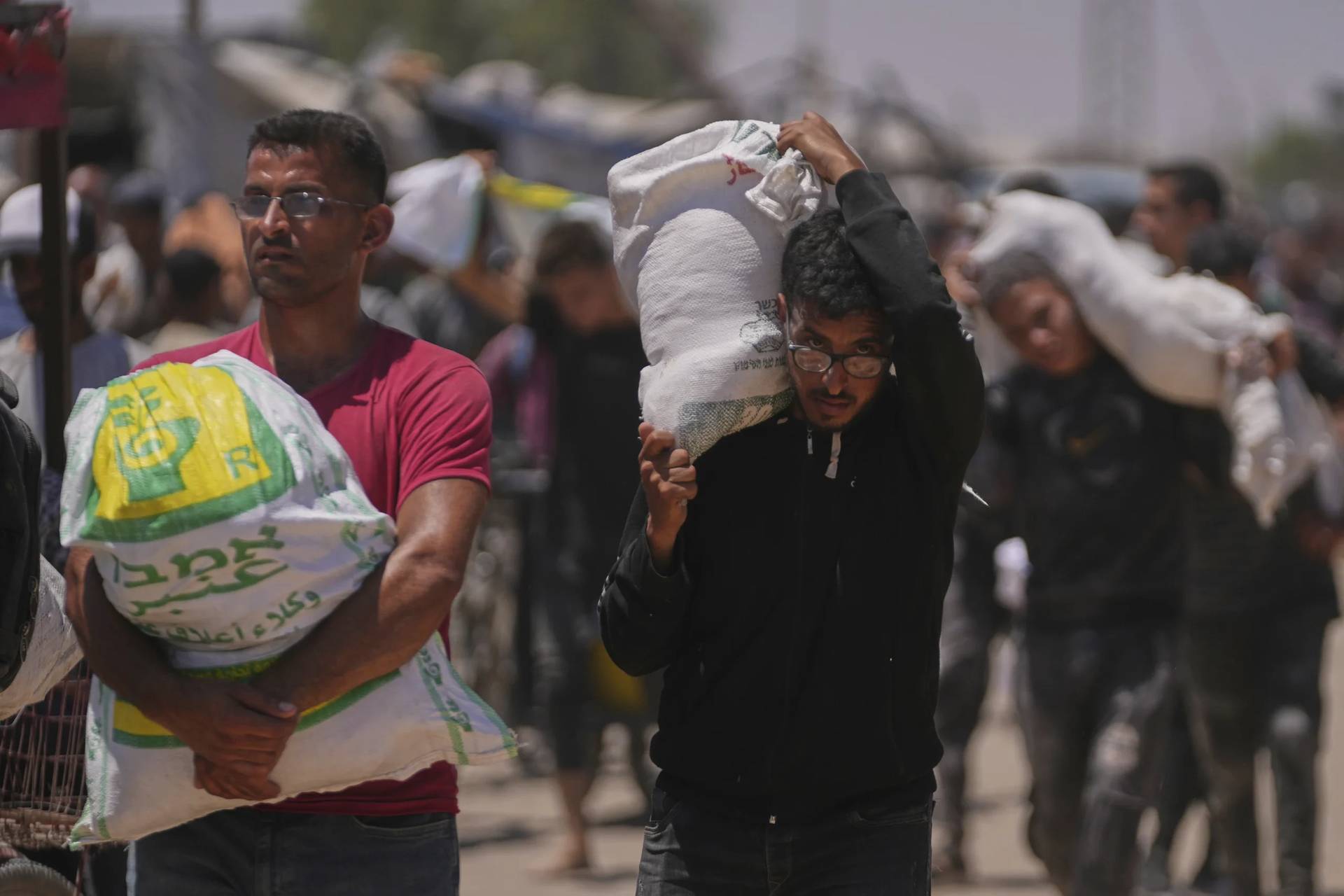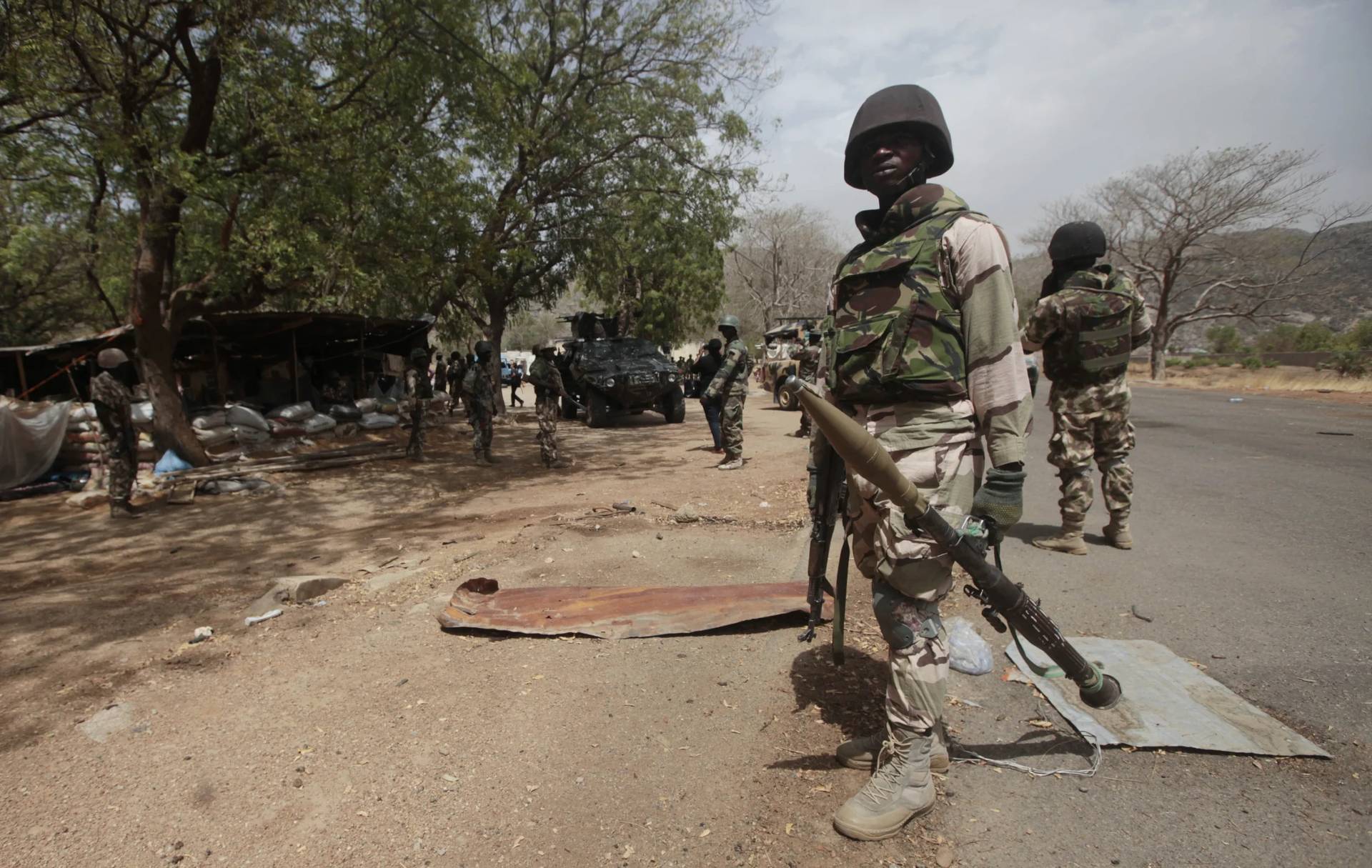BAGHDAD, Iraq – Flanked by the pictures of 48 Iraqi martyrs, Pope Francis on Friday defined them as a reminder that inciting war and violence is incompatible with authentic religious teaching.
The deaths of those martyred in the Syro-Catholic Cathedral of Our Lady of Salvation on Oct. 31, 2010, Francis said during a meeting with the bishops, religious, and catechists in Baghdad, “are a powerful reminder that inciting war, hateful attitudes, violence or the shedding of blood are incompatible with authentic religious teachings.”
Cardinal Louis Sako, head of the Chaldean Catholic Church, urged the pope to hurry their sainthood cause, meaning to publicly acknowledge that the 48 Catholics murdered by five terrorists during Mass were killed in odium fidei, meaning in hatred of their faith.
Two of those murdered were young priests, along with several children and a pregnant woman.
“Regardless of what has happened to us and our pain, we have persevered in the faith, our spiritual serenity, and our fraternal solidarity, with all the churches doing a great job in being close to those wounded, to help them and ease their pain,” Sako said.
Francis also said that he wanted to remember all the victims of violence and persecution, regardless of the religious group to which they belong, which he will do on Saturday, when he heads to the city of Ur, birthplace of Abraham, father of believers. There, the pope will meet with the leaders of the religious traditions present in Iraq, to proclaim “our conviction that religion must serve the cause of peace and unity among all God’s children.”
“This evening I want to thank you for your efforts to be peacemakers, within your communities and with believers of other religious traditions, sowing seeds of reconciliation and fraternal coexistence that can lead to a rebirth of hope for everyone,” Francis said.
The 2010 attack lasted over four hours, until the police raided the church. At this point, the terrorists blew themselves up. They were never officially identified.
Fathers Thaer Saadulla Abdal, 32, and Waseem Sabih Kas Boutros, 27, had been ordained in 2006 and 2007, respectively, in the same cathedral where they were martyred.
Behind the altar on top of an image of the Virgin with Jesus was a picture of the martyrs, around a red cross, signifying the blood they shed. On the roof and the floor, squares of metal and granite mark the places where their bodies were found.
At a diocesan level, in Baghdad, the cause for their martyrdom was closed in 2019 when it was sent to Rome. During his flight from Italy to Iraq Friday, Francis received a book compiling the story of the martyrs.
The cathedral, Francis said, is “hallowed by the blood of our brothers and sisters who here paid the ultimate price of their fidelity to the Lord and his Church.”
“May the memory of their sacrifice inspire us to renew our own trust in the power of the cross and its saving message of forgiveness, reconciliation and rebirth,” he said. “For Christians are called to bear witness to the love of Christ in every time and place.”
The pontiff was welcomed into a semi-filled church to guarantee social distancing, but the ululating of the women who were present gave the sense that the cathedral was packed. Before going in, he spent several minutes greeting disabled people at the door.
Hardships, he said, are part of the daily experience of the Iraqi faithful, noting that in recent years the have had to deal with the effects of war and persecution, as well as the fragility of basic infrastructures and economic struggle “that has frequently led to internal displacements and the migration of many people, including Christians, to other parts of the world.”
Francis also invited those present not to be “infected by the virus of discouragement,” that can spread “all around us,” because God has given the faithful an “effective vaccine” against it: the hope born of persevering prayer and fidelity to the apostolates.
“With this vaccine, we can go forth with renewed strength, to share the joy of the Gospel as missionary disciples and living signs of the presence of God’s kingdom of holiness, justice and peace,” he said.
Addressing bishops, he called on them to be close to their priests, so that they won’t see them as administrators or managers but “true fathers,” worried for the welfare of the priests entrusted to their care, ready to offer support and to encourage them.
Talking to priests, women and men religious, catechists and seminarians, he called on them to have courage and zeal in announcing the Gospel, without being consumed by the “administrative” element of their tasks, meaning, without spending all their time in meetings or behind a desk, to instead accompany the faithful.
“Be pastors, servants of the people, not civil servants,” he said.
Putting together the martyrdom cause of the 48 people killed in the terrorist attack took over nine months of research. The information on each varied, and there are two victims for whom the cause only has a name and their presence.
The fact that Baghdad lost two thirds of its Catholic population in the past two decades, either because they were killed or forced to flee, made the investigation all the more complicated. Many of the family members of those killed, who are usually interviewed for a sainthood cause, are living as refugees, either not wanting or not being able to be identified.
The witnesses hail from all over: Lebanon, France, Canada, Australia, and also Baghdad. Most have since fled their country, one of the cradles of Christianity. Many of them said that the terrorists, when pulling the trigger or before activating the explosive belts they carried, shouted “Allahu Akbar,” which translates to “God is great.”
When he decided to open the martyrdom cause, Archbishop Yousif Abba, the Syriac Catholic Archbishop of Bagdad, had contemplated only pursuing the sainthood cause for the two priests, as the Church had the information on them. But in the end, they were all included because they all died for the same reason: They were at Mass.
All of those who lost their lives did so in the church. Many were seriously wounded and hospitalized, but survived. An estimated 50 people had hidden in the sacristy with an elderly priest and the pregnant woman who had been mortally wounded before she reached the safety of the hiding place. A group of around 20 had found refuge in the baptistery. They too were saved.
Follow Inés San Martín on Twitter: @inesanma


















